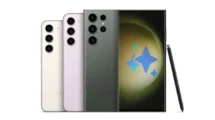India’s first Internet of Things (IoT) center has been launched with the joint collaboration of National Association of Software and Service Company (NASSCOM), Education and Research Network (ERNET) and Department of Electronics and Information Technology (DEITY).
Situated in Bangalore, the center aims to enable speedy adoption of IoT technology expanding it rapidly to put India at the forefront in this field.
The start-ups SAAR Microsystems, ThingsCloud, Uncanny Vision, Wireless Controls and LightMetrics, are the first five to be chosen for Centre of Excellence (CoE) for Internet of Things (IoT).
NASSCOM will manage the Centre of Excellence for Internet of Things (CoE-IoT) seed funded by the Government of India and will be run on Public Private Partnership (PPP).
The initiative will require NASSCOM to actively create and support a physical laboratory infrastructure. This will contribute to building an ecosystem designed for aspiring entrepreneurs to get access to brand new technologies and come in contact with researchers and industries.
IoT to provide solutions to basic problems:
India plans to use the Internet of Things (IoT) network to provide solutions to problems in the transportation system, parking, water management, electricity and women’s safety. This will help in creating truly smart cities, smart agriculture, smart health services and smart manufacturing.
This first Centre of Excellence for Internet of Things (CoE-IoT) is set up by the Government of Karnataka as the partner state. The center which can accommodate 40 start-ups.
They will test prototypes for concepts for vertical and horizontal solutions. The initiative has a target of creating a collection of 5 Centre of Excellence for Internet of Things (CoE-IoT) across the country.
What is IoT and how it works
The Internet of Things (IoT) works by embedding several advanced electronic sensors with networking capability in vehicles, buildings, bridges, and other physical objects.
The sensors exchange data among each other and send diagnostic data to a processing server resulting in continuously updated knowledge of the conditions of those objects.
Each and every device or object fitted with this type of inter-networking sensors can be monitored remotely just using the internet. This enables things like a smoke detector to communicate with a smartphone through the internet.




